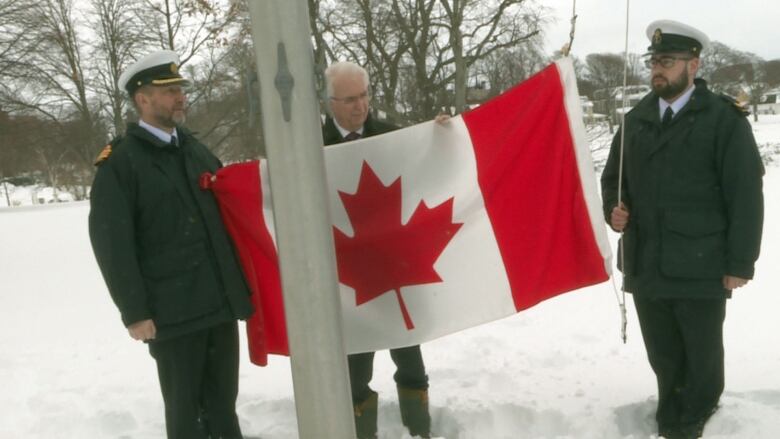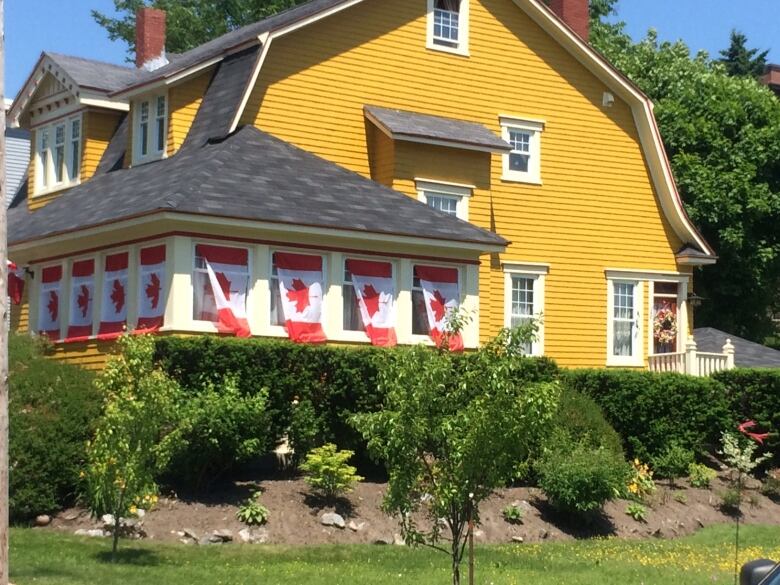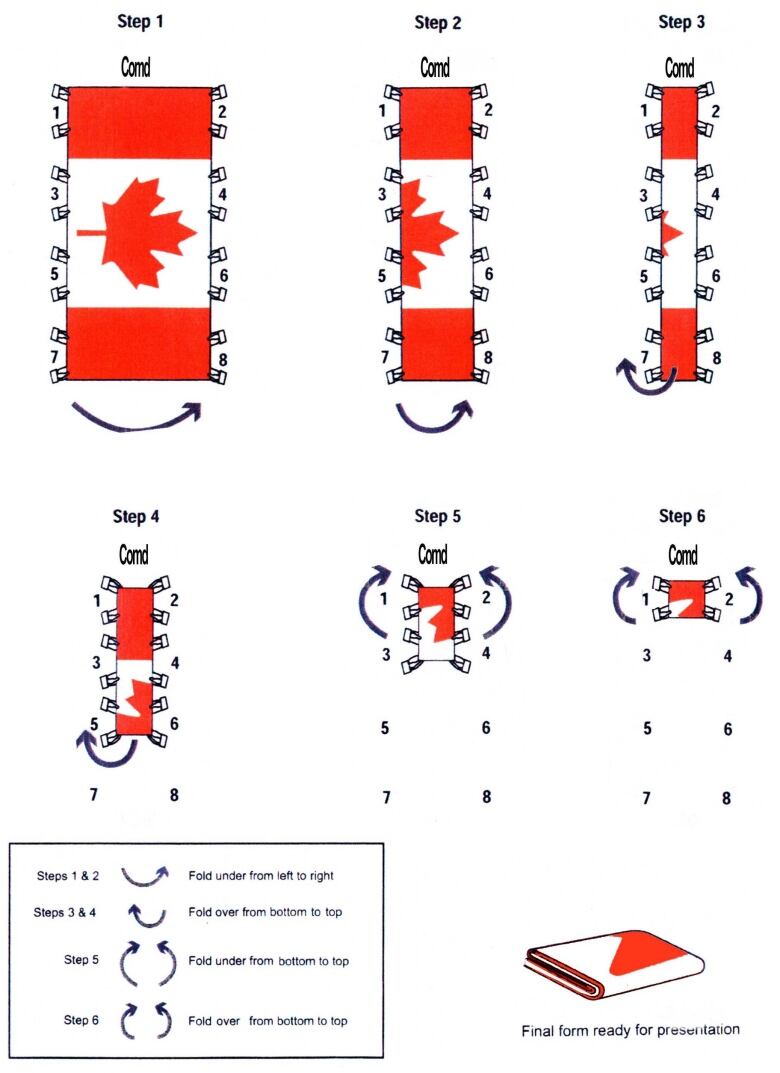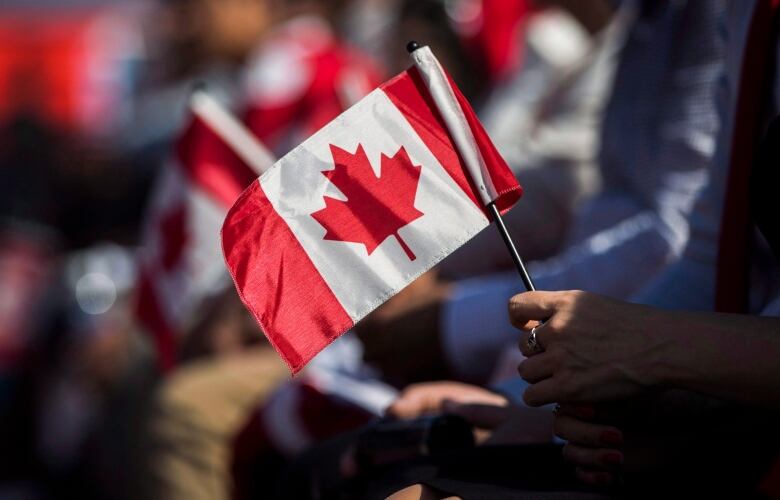Don't eat on it, and other rules: 8 ways to treat the Canadian flag with respect
All flag traditions are based on respect

Feb. 15 marks National Flag of Canada Day, in honour of the first time the Canadian flag was raised on Parliament Hill, on Feb. 15, 1965.
Canadians should be proud to fly the flag, but they should also be aware there are rules and etiquette attached to the practice.
Here are eight of the official rules for flying the flag:
1. In Canada, the Canadian flag rules
In general, treat the flag with respect.
"It should not be subjected to dishonour or displayed in a position inferior to any other flag," says the Government of Canada web site.

There are complex rules regarding the positioning of the flag: generally the same height as other flags, and to the left (or centre of three flags). If you're planning a display of multiple flags, check out the full set of rules here.
2. Fly it unadorned
Nothing should be pinned or attached to the Canadian flag, nor should it be marked in any way.
It is permissible to attach a border to the flag, which can be marked. Note those markings should not break the first rule of flag etiquette: treat it with respect.
3. Don't sit or eat on it
Part of treating the flag with respect is treating it as a flag.
It should not be used for seat covers or a table cloth.
4. How's it hanging?
Everyone knows the flag should be flown with the stem on the maple leaf down.

It is less well known that a vertically hanging flag should have the stem pointing to the right. If it is hanging in a street, the stem should be eastward on a north-south street and northward on an east-west street.
5. Take care when taking it down
There is a specified protocol for folding a Canadian flag. The Canadian government provides this pictorial guide.

Note the number of people required to fold the flag is dependent on its size.
6. Respect to the end
A flag that is torn or soiled should not be flown, and it should be "destroyed in a dignified way," says the Government of Canada website.

The site does not give examples of how it should be destroyed, but traditions include burning and burial. Burial was more common when flags were made of wool, which was difficult to burn.
Care should be taken if burning a flag made of synthetic materials, because they may give off toxic chemicals.
7. It's not a crime
The rules regarding the Canadian flag in Canada are not governed by legislation, but by tradition and etiquette.
8. You can have the flag draped over your casket
From the Canadian government web site:
"Being laid to rest with the Flag is an honour that is not solely reserved for the funerals of soldiers, veterans, and dignitaries but for all Canadians."
- MORE P.E.I. NEWS |Charlottetown to fix up streets 'in great despair'
- MORE P.E.I. NEWS |'I have a couple of good years': Charlottetown man adjusts to life with ALS












_(720p).jpg)


 OFFICIAL HD MUSIC VIDEO.jpg)
.jpg)



























































































